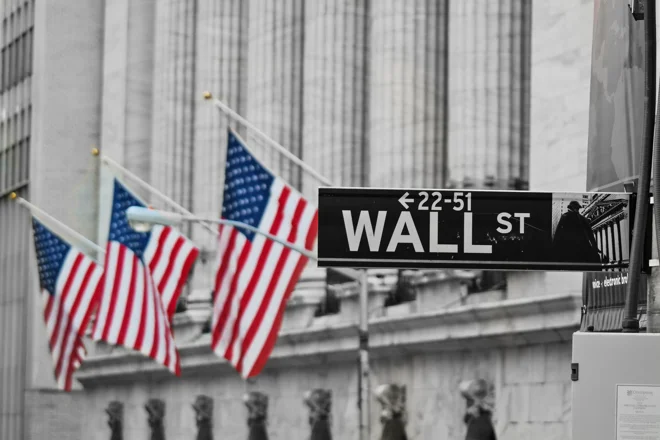A side-effect of prolonged lockdowns is that the entire Netflix catalogue gets nearly exhausted at some point. When that happens, classics come back in vogue – both films and economic topics. If The Postman Always Rings Twice, so does inflation: it makes the news both when it happens and then a year later, when it distorts comparisons that look back 12 months. After April’s US headline and core CPI inflation readings hit multi-year highs of 4.2% and 3%, respectively, investors seem unable to focus on much else. The key question is whether this is more like a temporary inflation spike (our view) driven by strong growth and, therefore, positive for cyclical assets, or a protracted spiral prompting central banks to hike interest rates. Let’s think about both scenarios.
Inflation driver #1 | Demand vs supply mismatch: Imagine that you’re stuck at home for a year, with stimulus cheques coming through and no physical possibility to spend money on many things. Maybe your job is at risk but, rather than going down as you dig deeper into your pockets to make ends meet, your savings rise – courtesy of large-scale fiscal support. You could still keep trading on your favourite retail platform, but you really want a haircut, go back to the gym, dine out, travel, replace your old clunker with a new car as you were planning six months ago but then hesitated, and finally get that flashy flat screen TV. But, as reopening starts, firms’ inventories are still running low, there are shortages and not all shops made it through the pandemic. Those that survived had no choice other than cutting prices last year. Now they’re raising them. No wonder that inflation is rising.
Inflation driver #2 | Spare capacity and wage growth: A fundamental boost to inflation would need a strong pickup in wage growth and, therefore, a tighter labour market. With a still large share of the workers who lost their jobs during the recession still unemployed, it’s not surprising that wage growth isn’t spiking. Imagine that you’re unemployed and you get a job offer paying somewhat less than the job you lost. Most people would take it, as it’s better than no job. The unemployment rate, at 6.1% in the US, and the number of unemployed, at 9.8 million, are down considerably from their highs in April 2020. Bu they remain well above their pre-pandemic levels (3.5% and 5.7 million, respectively, in February last year) and higher than the ‘natural’ rate of unemployment – which we’d put at around 4.5% – below which inflationary pressures would rise more visibly.
Inflation driver #3 | Technology and demographics: To be clear, it’s not impossible that overstimulation – partly related to central banks’ efforts to ensure affordable funding rates for governments to implement their fiscal stimulus programmes – manages to de-anchor inflation expectations, and that supply bottlenecks turn out to be more structural in nature. However, further out, it’s also possible that technological innovation and automation lead to strong growth but, at the same time, keep a lid on inflation. Even if wage growth were to accelerate, ageing societies, which tend to rely on fixed income savings, may not prefer high inflation. They typically tend to prefer stable, low-inflation environments. And older cohorts of the population tend to vote to a greater extent than younger ones, affecting legislation that could potentially entrench a disinflationary bias.
Here’s why this matters:
More reflation boom than inflation threat: We believe that the second half of the year will likely see lower inflation rates than today. Still above the Fed’s target, but converging towards it at some point next year. In part, this is because what’s pushing inflation higher is the comparison with the corresponding months of last year, when prices were falling. These effects will drop out of the annual inflation rates soon. In part, this is also because higher inflation is due to the feedthrough of higher input costs, from shipping to energy and materials. But firms will likely rebuild their inventories as growth comes back and shortages will lessen over time. To us, what’s happening is reflation: real growth as the economy reopens and the cycle restarts. And reflation is good, as it tends to be accompanied by significant inflation in asset prices and some inflation in consumer prices.
High bar for major policy shift: Measures of inflation expectations have moved higher. However, the breakeven inflation curve remains inverted between 10 and two years. This could mean that the market looks at any rise in core inflation during the current economic upswing as a cyclical trend which, structurally, may not endure. The more immediate market concern is that central banks may begin to tighten monetary policy sooner than expected. Markets continue to assign a rather meaningful probability to a Fed rate hike next year. Conversely, we think the Fed should start to taper its asset purchases (continuing to buy, but at a slower pace) from 2022, and hike only in late 2023. The current Fed projections are even more dovish. They highlight the transitory nature of the inflation rise and that the central bank still needs to see substantial progress in the labour market.
Meanwhile, let’s look at what’s going on around the world…
Words to live by: The Fed minutes this week may be important for markets. In April, Chair Powell suggested it was still too early to start talking about tapering. This has since been supported by Vice Chair and Governor Brainard. However, Dallas Fed President Kaplan has since said that a discussion about the pace of asset purchases would be appropriate. US Treasury Secretary Yellen hinted at modestly higher rates prior to the latest payroll miss, but then clarified that she was neither recommending nor predicting tighter monetary policy. So, in the minutes, it will be important to get a sense of the overall view of the committee. Data-wise, the purchasing managers’ indices should point to manufacturing strength globally; in services, conditions are likely to have remained buoyant in the US, given stimulus and reopening, and Europe should have started to recover.
Daniele Antonucci | Chief Economist & Macro Strategist





